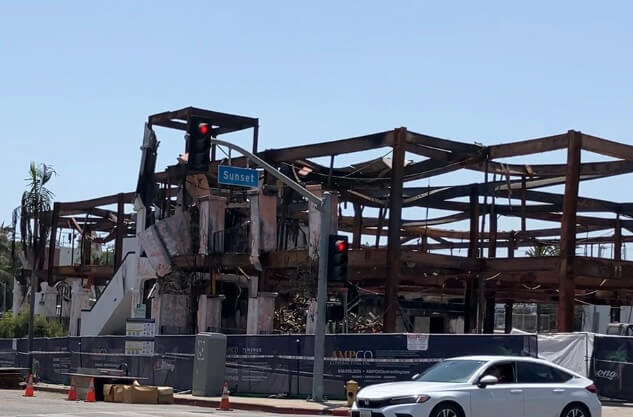New film released titled “To Right a Wrong: The Story of Ballard Mountain”
The Santa Monica Mountains were not always welcoming to people of color. In fact, there was a mountain here with a racial slur as its name. Finally, in 2010, it was renamed Ballard Mountain. In celebration of Black History Month, the National Park Service (NPS) is bringing attention to the story of the Ballard family, the first African American family to settle in the Santa Monica Mountains.
John Ballard, a Black man from Kentucky, arrived in Los Angeles in 1859. He became active in civic affairs and was one of the founding members of the city’s first African Methodist Episcopal Church.
In 1880, Ballard picked up his family and moved about 50 miles west to the Santa Monica Mountains. He purchased 160 acres of land, and the family raised some livestock and a few crops. Ballard collected firewood and sold it in the city.
Ballard was described as an intelligent and literate man. He distinguished himself as an extraordinary individual who worked hard and persevered, despite attempts by others to drive him off his land.
Despite his accomplishments, Ballard was mistreated by other pioneers due to the color of his skin. Thieves unsuccessfully tried to chase Ballard from his home. His cabin was set on fire twice, but he was not easily deterred. He rebuilt his home both times.
Years later, one of his seven children, Alice Ballard, became a homesteader herself, an unusual feat for any woman, much more a woman of color. She claimed an adjoining lot, and another 160 acres was added to the Ballard family land. She eventually married and moved to Los Angeles.
The Ballard homesteads included a 2,031-foot peak that stands in the mountains just south of today’s cities of Thousand Oaks and Agoura Hills. Due to John and Alice’s presence on the land, the peak unfortunately came to be known as “N-wordhead Mountain.” It is unclear where or when this started, but the name appears on early maps of the area.
John Ballard died in 1905 when he was about 75 years old.
The Ballard family continued to distinguish themselves in the Los Angeles area over the decades. Claudius, John Ballard’s grandson, was a Berkeley-educated doctor who fought during World War I. He was awarded the Croix de Guerre by the French for his bravery.
Both of Claudius’ sons, Albert “Lucky” and Reggie, fought in World War II. Reggie was a Tuskegee airman and after the war he helped desegregate the Los Angeles City Fire Department. He and his wife Margaret had six children, many of whom continue to live and serve their communities in the Los Angeles area.
In 2010, the mountain known as a racial slur was renamed Ballard Mountain in honor of John Ballard. A 13-minute documentary film, released in February 2022, called To Right a Wrong: The Story of Ballard Mountain documents the renaming effort. It also chronicles the inspirational resiliency of the Ballard family who overcame incredible hardships.
“So often people will give attention to something because it’s media worthy, but this was something that a group of folks thought was worthwhile,” said great, great-grandson Ryan Ballard referring to the renaming effort.
Ryan’s father, 96-year-old Reggie Ballard, was also extensively interviewed for the film. To view the film, visit https://www.nps.gov/media/video/view.htm?id=F8C0B76E-2BFC-462B-9735-CBFC6233D2E3
Local historian and Moorpark College history professor Patty Colman and residents Paul and Leah Culberg were instrumental in making the name change happen. They chronicle their recollections in the film along with SMMNRA park superintendent David Szymanski.
“Ballard Mountain is the untold story of an African American family’s experiences in the Santa Monica Mountains and the City of Los Angeles,” Szymanski said. “It is important because it reminds us of the unrecognized people who passed our cities and parks down to us.”
The Santa Monica Mountains Fund and the National Park Service provided funding for the project. Darius Dawson directed and filmed the video, and Austin Rourke edited it. Both filmmakers are alums of the American Film Institute in Los Angeles.
The film was written and narrated by Ana Beatriz Cholo, the public affairs officer for SMMNRA. Additional photography was provided by Kayla McCraren, the park’s visual information specialist.


























